DUMBARTON CENTRAL STATION, Station Road, Dumbarton.
ACCESS : Besides by rail, it is accessible by car and taxi. The platforms are on the upper level and accessed by steep ramps.
Listed A.
Dumbarton Town Centre Conservation Area.
Some buildings are not just great designs to entertain us, or impressive to strike awe in us, or, of course, imbued with any of the more pragmatic yet perfectly necessary functions such as shelter and containment. Form following function may satisfy in us a certain satisfaction. But some buildings do much more.
Dumbarton Central Station is one that is fascinating in itself. Don't get distracted by those small lacklustre side entrances that substitute as main entrances. Don't turn a blind eye to its features long since imbued with decay. Look past and through that and you will see that it still speaks of a grander bygone era of railway travel. It welcomes visitors to Dumbarton and bids them farewell after a pleasant sojourn. It also punctuates their journey to other attractions in the area such as the Langcraig Hills or Loch Lomond. And it acts as the Gateway to central Dumbarton and to Dumbarton Castle. And beside all that, it acts as a beacon to the local community; an icon for the town.
It is already many years since it was threatenend with its demise. It was saved through the pressure of a concerned community.
Dumbarton Central Station comprises an upper operating station level with covered platforms in brick, steel and glass. Some areas have been leased out. The station is raised above a road underpass and some pedestrian / cyclist underpasses.
The main entrance was from the road underpass where Church Street and Townend Road converge. This was very grand. The facade here wrapped around to part of each side in neo-gothick red sandstone traceery glazed with leaded glass. From here you entered a foyer where there was the ticket office. If you came early you could deposit your bags in the luggage room and relax with some tea in the waiting room. Travel was a grand affair and the council even had a dedicated room where they could have meetings and entertain visitors.
From there you would ascend the stair to whichever platform you were leaving from - your baggage naturally rising to join you by baggage lift and in the studious care of a porter.
The railway line here was opened in 1854, but was altered and widened southwards in about 1896 which is when most of these structures were erected. It is interesting to read the description in the listing text. Specific terms seem illusive, but gothic, gothick, Tudor, Tudor-gothic, art-nouveau are all used. In essence it is sheer exhibitionism and joy in architectural expression of the (then) new and expanding mode of travel, in providing a gateway to Dumbarton and the wilds and beauty of Loch Lomond.
The Dumbarton Stations Improvement Trust was established due to concern at the dire condition of this station (one of 3 that serve the town) in particular. It commissioned a Conservation Management Plan from a team of specialist consultants under the leadership of a conservation architect. Through that it is envisaged that the station will be returned to reflect its glory days of train travel and as a gateway of pride to Dumbarton and the Loch Lomond and the Trossachs National Park. To give them their due, ScotRail have been giving attention to those features that they have prioritised. These include maintenance and repairs to the bridge structure that supports the rails through the station; coping and cast iron repair on the pedestrian ramps; roof slate repairs and ridging replacement; general painting etc. But there is still a tremendous amount to be done.
Those two ramps that are currently the main pedestrian access to the platforms were built for post and baggage vehicles - not people. By today's standards, they are far too steep for those with mobility challenges or simply mums pushing buggies. The Dumbarton Stations Improvement Trust ambitously hopes that the ground floor facilities will be restored and the elegant tiled stairs reopened for public use. This is likely to still be sometime in the future and would not resolve access for those with mobility challenges. It is therefore envisaged that disabled lifts be installed in the near future in the vicinity of the current side entrances.
The large steel boxs on the platforms may be unsightly, but they hint at an extraordinary arrangement below them. The original stairs complete with Victorian tiling are still within them. And at the ground floor, the ticket office, waiting room and other facilities defined by ornate wood and leaded glass partitions. All of that has seriously deteriorated through neglect, intrusion, damp and pigeons. But it is still there.
Imagine this station restored and spruced up again as the iconic gateway to Dumbarton and this area as it should be.
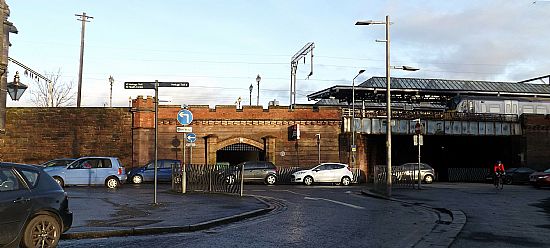 Not much much of a main entrance, but that belies the true character of the station.
Not much much of a main entrance, but that belies the true character of the station.
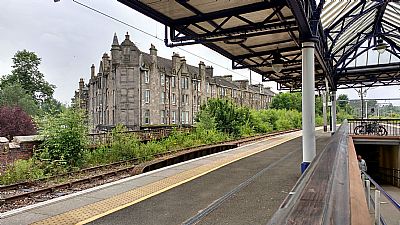
The raised platforms give good views of other buildings within the Conservation Area.
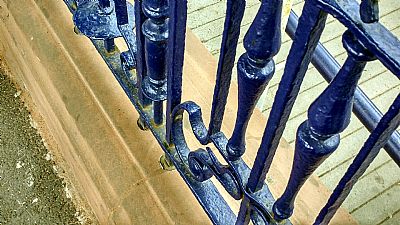
Railings and copings as restored where they surround the pedestrian ramps.
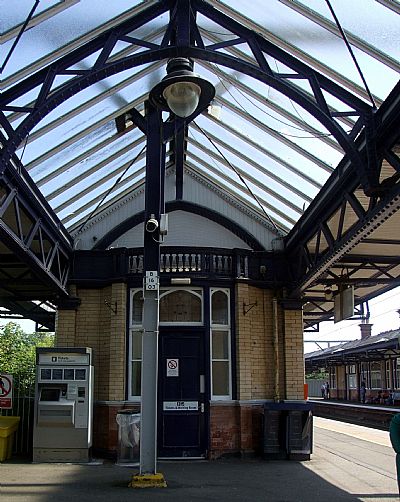
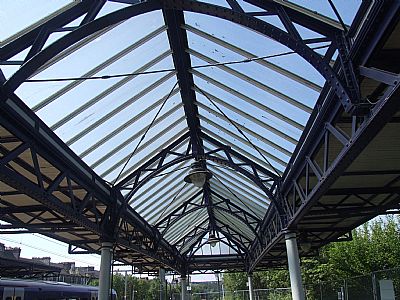
The platform roofs were punctured at the time when the line was electrified.
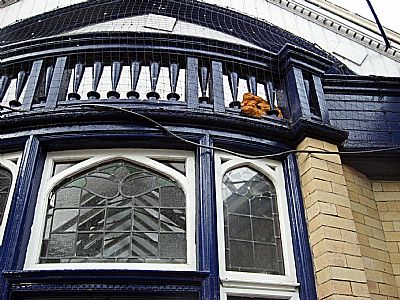
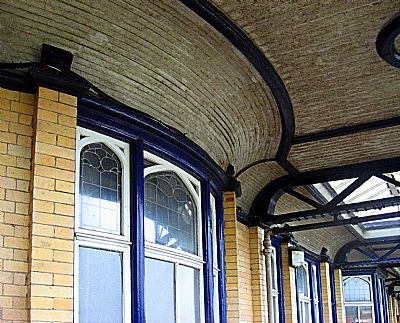
Platform level facilities.
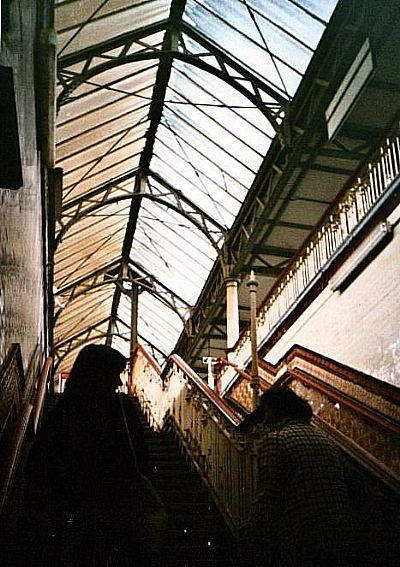
The stairs as photographed in about 1988 complete with glazed tiles. They are largely still there but hidden within steel boxes on the platforms.
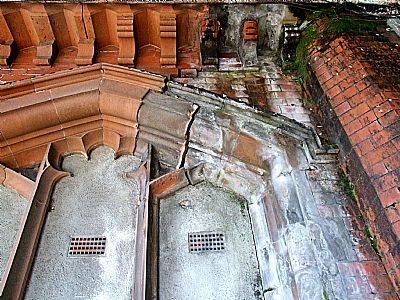
Some of the old main entrance windows in the road underpass built over.
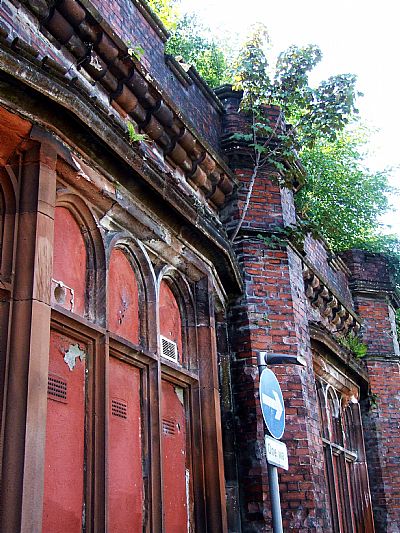
The ground floor windows where they face onto Bankend Road. Vegetation has taken root within the masonry and along the parapets and disused north platform. Even when cut back they have readily flourished again.
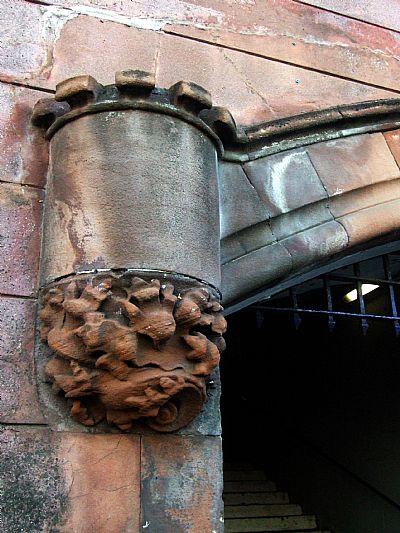
Some of the ornate stone detailing. This is outside the Bankend Road side entrance steps.
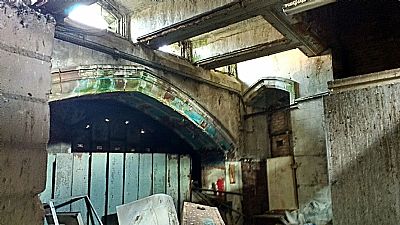
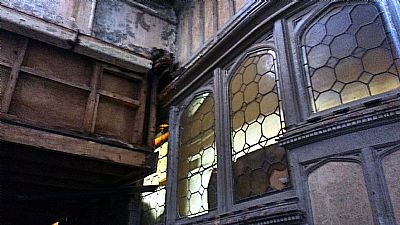
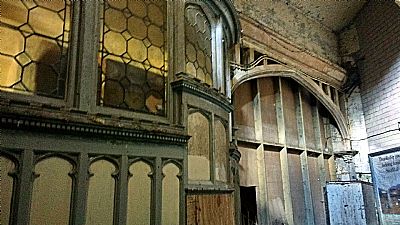
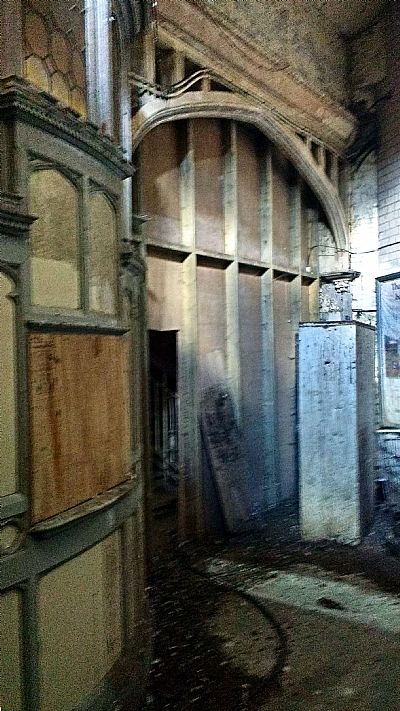
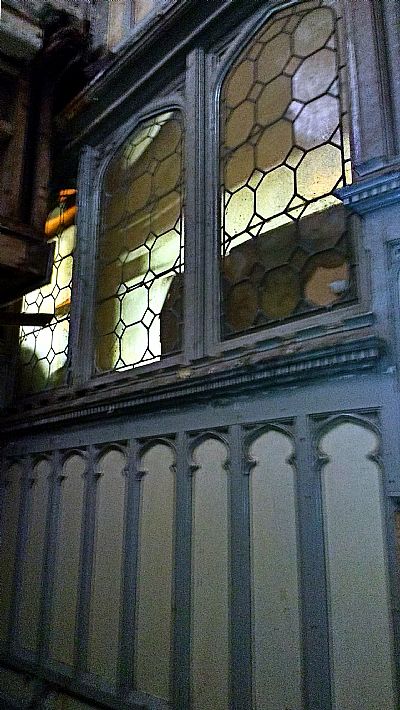
Much of the original features within the ground level foyer still exist even if very deteriorated. These enclosed the ticket offce and other facilities.
CONNECTIVITY :
Not only do the railways connect places all over the country, but suitabl connectivity between stations and the core centres and the communities they serve is crucial. The surrounds of Dumbarton Central Station have become dire over the years, particularly since the main stairs were closed along with the entance hall and other facilities within the underpass at Townend Road.
The adjacent underpass at College Street has been in equally dire condition, but although recognised as a key part of the National Cycle Route 7, had been relegate to simply a place to leave the wheelie bins.
Optimism was raised in 2018 with the launch of a "connectivity poject" to improve connectivity with the town centre and generally upgrade the whole area. The project had a major hiccup due to the pandemic, but the finishing touches were made in early 2024. Although not without its criticisms (the lack of an area to pull to one side to drop off passengers with prams etc), it is crtainly dramatic, smart and cheerful. An excellent first impression of Dumbarton when arriving by train. There is still much to do and resolve, but this project has greatly improved the situation.
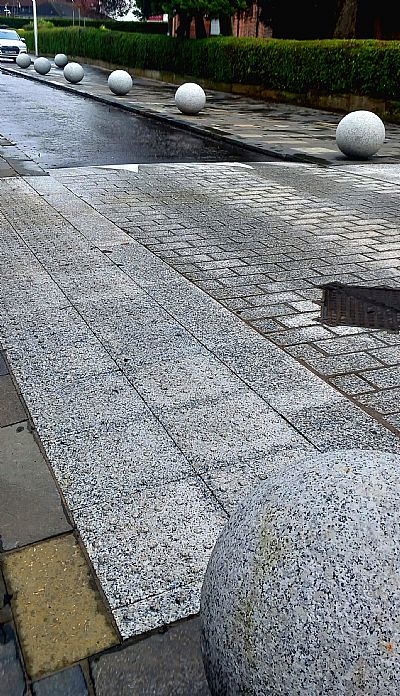
Big granite balls everywhere.
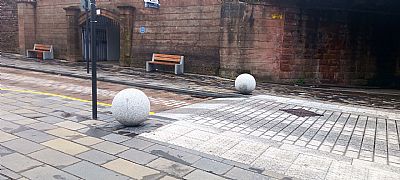
This is the raised speed "table" where the pedestrian crossing occurs at Station Road. It also serves as the NC7 crossing point where cycle route arrives along Bankend Road and comes through the underpass.
BRITISH LISTED BUILDINGS : http://www.britishlistedbuildings.co.uk/200360984-dumbarton-station-road-dumbarton-central-station-dumbarton
CANMORE : https://canmore.org.uk/site/87969/dumbarton-station-road-central-station
RAILSCOT website : https://www.railscot.co.uk/locations/D/Dumbarton_Central
WEST DUNBARTONSHIRE COUNCIL : Conservation Management Plan : https://www.west-dunbarton.gov.uk/business/regeneration/dumbarton-town-centre/dumbarton-central-station/conservation-management-plan-for-dumbarton-station/
WEST DUNBARTONSHIRE HERITAGE TRAIL : DUMBARTON : https://www.west-dunbarton.gov.uk/media/2619068/dumbarton.pdf Access through https://www.west-dunbarton.gov.uk/libraries/archives-family-history/heritage-trail-leaflets/.

